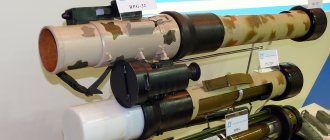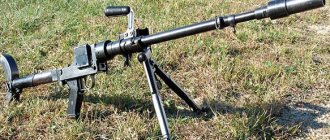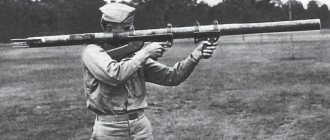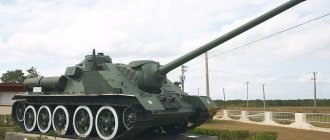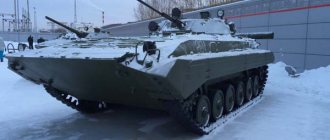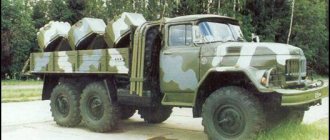Mine weapons are one of the main types of engineering weapons. This weapon became especially relevant when heavy armored vehicles and other vehicles appeared in armies. To combat enemy armored vehicles, perhaps the most convenient means of anti-tank defense is an anti-tank mine. A correctly placed high-explosive charge can not only disable a tank or armored personnel carrier. Minefields can become an insurmountable barrier for enemy mechanized units, preventing an offensive in the most threatened areas of the confrontation.
Mine weapons become the main means of defense
Initially, the mine in the form in which we are accustomed to perceiving this weapon did not arouse much enthusiasm among the military. Mine weapons were mainly used for engineering purposes to break through strong enemy defensive formations and to destroy long-term defensive fortifications. Only with the advent of mechanized weapons did mines begin to be used more purposefully.
Warships were the first to become familiar with mine weapons. The installation of mines along the route of military ships jeopardized all existing transport communications. The Russo-Japanese War was the first armed conflict during which mines were widely used. The results were stunning. More than 20% of all warships of the warring parties were sunk by mines. The mine could easily cripple any large warship. From that moment on, the mine became firmly established in the arsenal of all navies, becoming an essential element of naval defensive strategy.
In the land theater of operations, mines began to be actively used during the First World War. When the first armored vehicles began to appear on the battlefield, we had to remember about mine weapons. At that time, high-explosive mines were used, capable of causing serious destruction to ground objects with the explosion of a powerful TNT charge. The division of mine weapons into anti-tank and anti-personnel mines occurred much later, when the need arose to create an effective engineering means of deterring offensive actions. Long-term defensive lines that emerged on the borders of France and Germany, on the Soviet Western border and on the borders between Finland and the Soviet Union included large-scale minefields. The emphasis was on laying high-explosive charges capable of containing mechanized and mobile formations. At first these were object land mines, anti-vehicle mines that did not have a clearly defined purpose. As a rule, such charges were triggered by a simple mechanical impact on the fuse, or were activated by an electrical discharge.
A full-fledged service anti-tank mine TM appeared in the early 30s. In Germany and the USSR, the creation of this weapon was treated with interest. The whole point is that it was the military doctrine of Nazi Germany and the Soviet Union that assumed the massive use of armored formations during a military conflict. It was possible to withstand the attack of armored vehicles only with the help of effective anti-tank defense. Anti-tank mines became one of the most important elements of such defense.
The beginning of the 30s was marked by active work to create new types of mine weapons capable of hitting all types of armored vehicles.
Development of mine weapons in the USSR
Officially, the first anti-tank mine appeared in the USSR in 1934. There was no need to talk about the complex design of the explosive device. The main charge was a set of TNT blocks, which were activated by a pressure fuse. The product, after a series of tests, was not widely used. It was replaced in 1935 by a more advanced design - the TM-35 anti-tank mine. This product has already been made thoroughly and thoughtfully. A TNT charge weighing 2.8 kg was enclosed in a steel case. The mine was installed manually, in almost any type of soil. The mine was activated using a universal fuse.
Created in 1935, the MUV fuse had a simple and reliable design, thanks to which it continues to be used today. A serious advantage that this type of fuse had was the technical ability to neutralize a mine. Having installed a safety sleeve or pin on the fuse rod, it was possible to begin demining.
Just before the war, the Soviet mine went through a stage of modernization, as a result of which the tactical and technical characteristics of the device were improved. The mine could be installed not only in the ground, but also in water, to a shallow depth. The operating principle of the device was as follows. When a wheel or track of a vehicle collided with the fuse cover, the main charge was triggered. As a result of the explosion and high-explosive action, the chassis of the vehicle was destroyed. In the pre-war period, Soviet military engineers tried to use the experience of the Soviet-Finnish conflict, during which Soviet armored units suffered significant losses from mine weapons. Anti-tank mines with anti-track and anti-bottom action appear in service with the engineering and sapper units of the Red Army. This weapon was capable of hitting the bottom of a vehicle with an explosion, completely incapacitating it and its crew.
Before the start of the Great Patriotic War, the arsenal of engineering and technical equipment of the Red Army included the following types of mine weapons:
- anti-tank mine TM-39;
- anti-tank mines PMZ-40 and TMD-40;
- anti-tank mine AKS;
- anti-personnel mines PMK-40, PPM-6 and the POZM mine - fragmentation ammunition.
All mine weapons equipped by the Red Army were equipped with fuses of various effects. These could be delayed-action detonators, blasting caps, tension or push-action fuses. Soviet military engineers achieved particular success in the design of remote fuses and electric detonators. Enormous credit for the creation of Soviet mine weapons, which the Wehrmacht units had to come face to face with, belongs to General D.M. Karbyshev.
The Soviet Union actively used mine weapons during the Great Patriotic War. Soviet anti-tank mines were most widely used in 1942-43, during the period of the most active hostilities on the Soviet-German front. The Battle of Kursk became the apotheosis of mine weapons. The German tank formations suffered the greatest losses as a result of explosions on anti-tank landmines. In the following months, due to the beginning of a full-scale offensive by Soviet troops along the entire front line, the intensity of the use of anti-tank and anti-personnel mines decreased.
In total, during the war years, Soviet military engineers and sappers installed more than 70 million mines for various purposes.
In the period 1941-42, the average density of minefields was 200-600 mines per kilometer of front. In 1943, this value reached its maximum - 800 mines per kilometer section of the front.
A huge number of mines remained in army warehouses after the end of World War II. A certain number of anti-tank mines were used to equip the state border in Central Asia, Transcaucasia and the Far East. The TM 57 anti-tank mine replaced the outdated models of mine weapons inherited during the Great Patriotic War in 1957. This weapon had a main charge weight of 6.5 kg and could be installed in the ground, in snow cover or under water. The mine was the first engineering tool that could be installed manually or mechanized. The combat operation of the new design of mine weapons had no time limits.
Following the TM-57 mine, a new weapon entered service with the Soviet Ariya in 1962. It was a more advanced passive ammunition, having a practical and versatile design. The device was activated by a pressure fuse. The installation of the mine could be done manually or mechanized. The main charge was 7.5-8 kg. TNT, TGA or MS. The TM 62M anti-tank anti-track mine - this engineering and technical device continues to be in service today, being perhaps the only passive means of organizing anti-tank defense.
sample 34 "8 cm Wgr. 34"
It was equipped with cast TNT without a case or cast ammatol 40/60 without a case. The weight of the explosive is 460 grams. The body of the mine is painted red. Some mines do not have a igniter; such mines are marked with the letters “o. B."
Mine weight 3.5 kg. Length: 33cm. Initial speed: 211m/s. Flight range: 0.8 km to 3.1 km.
Wehrmacht anti-tank weapons
Like the USSR, Germany entered the war with a limited number of mine weapons. The emphasis in the new armed conflict was on attacking actions, so engineering and special weapons remained in the background. Later, when the Wehrmacht faced fierce resistance from the Red Army, when Soviet troops began to take counterattacking actions, the Germans had to resort to mine weapons.
The history of the development of mines in Germany is identical to the processes occurring in the Soviet Union. Back in 1929, the German anti-tank mine Tellermine 29 was created. Later, with Hitler coming to power, German military engineers began work on creating anti-personnel and anti-tank mines. Unlike Soviet weapons, where the main anti-tank mine TM had a powerful high-explosive charge and a pressure-action fuse, German explosive devices carried a smaller main charge. However, the number of fuses was increased to three, which increased the likelihood of the ammunition going off.
By the beginning of hostilities, the Wehrmacht's arsenal of mine weapons was not very diverse. Only in 1943, after the beginning of a radical change in military operations on the Eastern Front, the German army began to receive anti-tank and anti-personnel mines in huge quantities. German minefields were laid in the most likely areas for a breakthrough by Soviet armored units. However, the advent of mechanized mine clearance equipment in the Soviet Army made it possible to successfully overcome this obstacle.
Detonator Gr. ZDLG. C/98 NP
Detonator Gr. ZDLG. C/98 Np from a German mortar mine 8cm
Detonators Gr.
ZDLG. C/98 Np from a German 8cm mortar mine The most widely used gr. Zdlg. s/98 of the next device. A detonator weighing about 35 g is pressed into the aluminum shell. Powdered picric acid was first used as a detonator, and then phlegmatized heating elements (gr. Zdlg. s/98 Np) or hexagen (gr. Zdlg. s/98H). A standard detonator capsule is inserted into the socket in the detonator, on top of which a circle of parchment and a pad of leather or pressed cardboard are placed. The edges of the shell roll up.
GR.ZDLG C/98 for 8 cm mortar mines
Detonator packaging
Pack of 5 gr.Zdlg detonators. C/98
Brand gr.Zdlg. C/98 F
on packaging
Wooden box for detonators
Pack of 25 Kl detonators. Zdlg. 34
Eventually
Mines, as a passive weapon, continue to remain in the arsenal of all modern armies. Thanks to these weapons, the weaker side of the conflict is able to hold back the offensive impulse of the strongest enemy. This was perfectly demonstrated during the Arab-Israeli wars and during the Gulf War. Huge minefields significantly limited the action of coalition troops in Kuwait and southern Iraq. Unlike other weapons, mines continue to be dangerous even after a long time. To this day, armed anti-tank and anti-personnel mines continue to be found in areas of the most intense fighting during armed conflicts.
